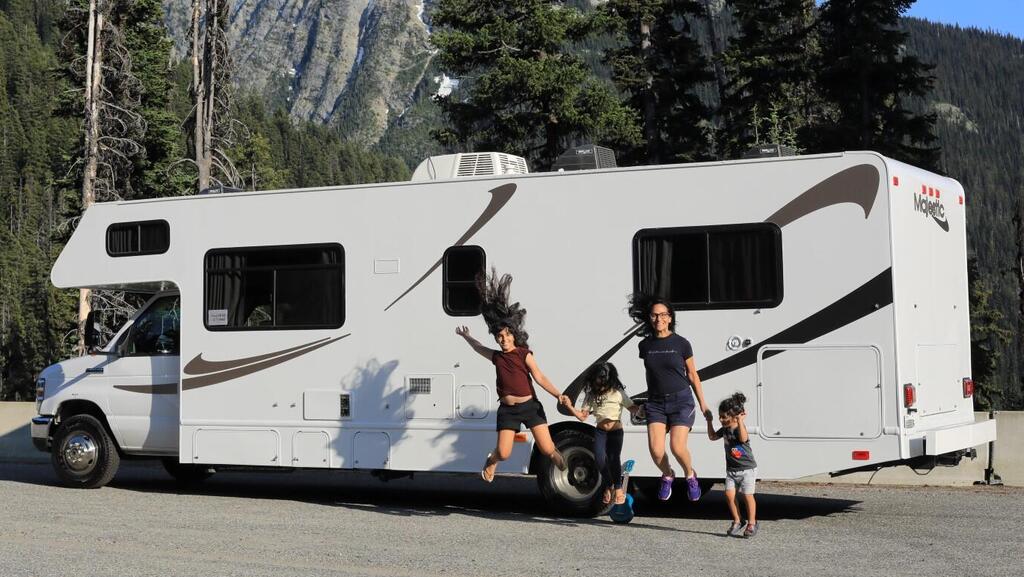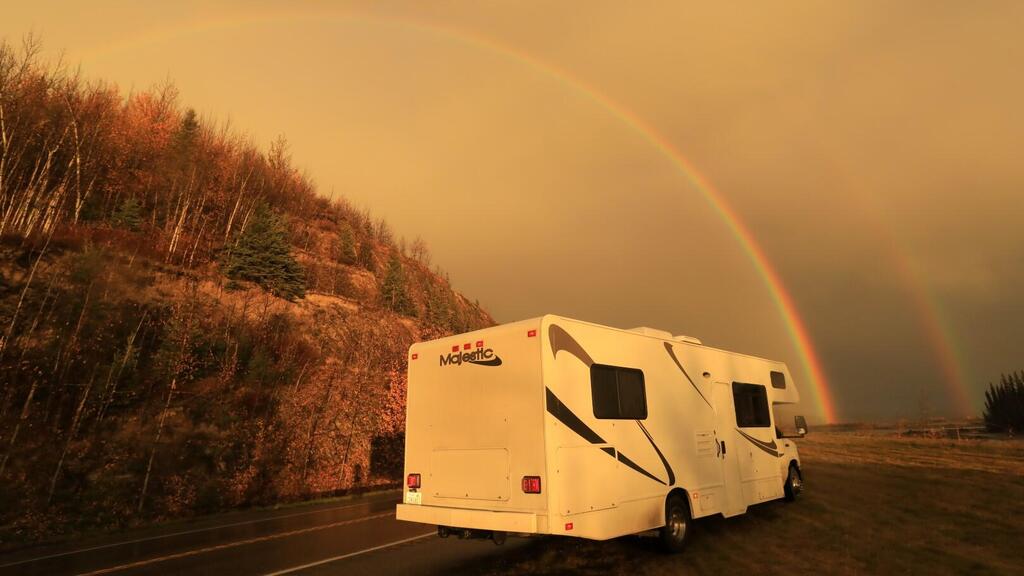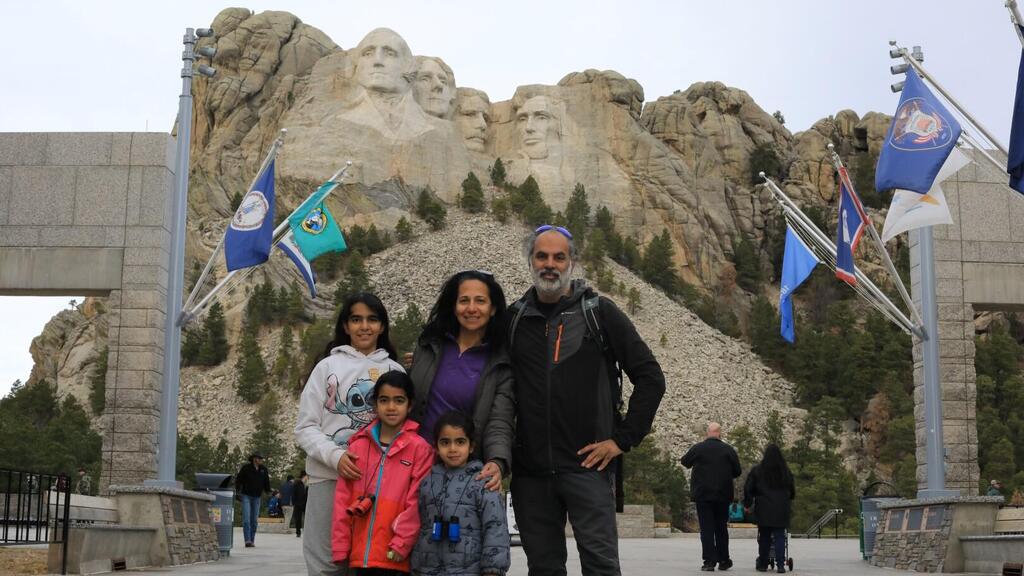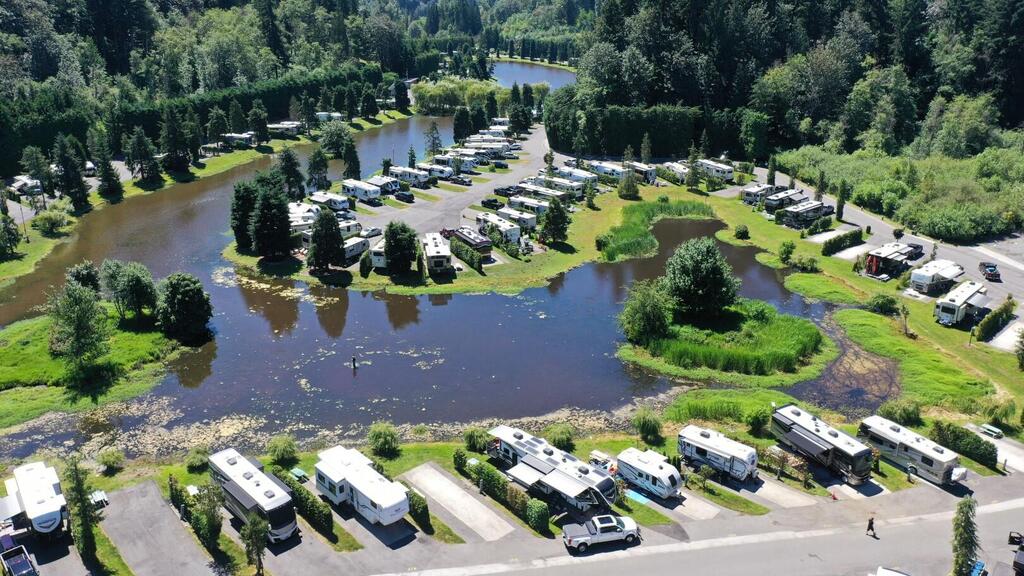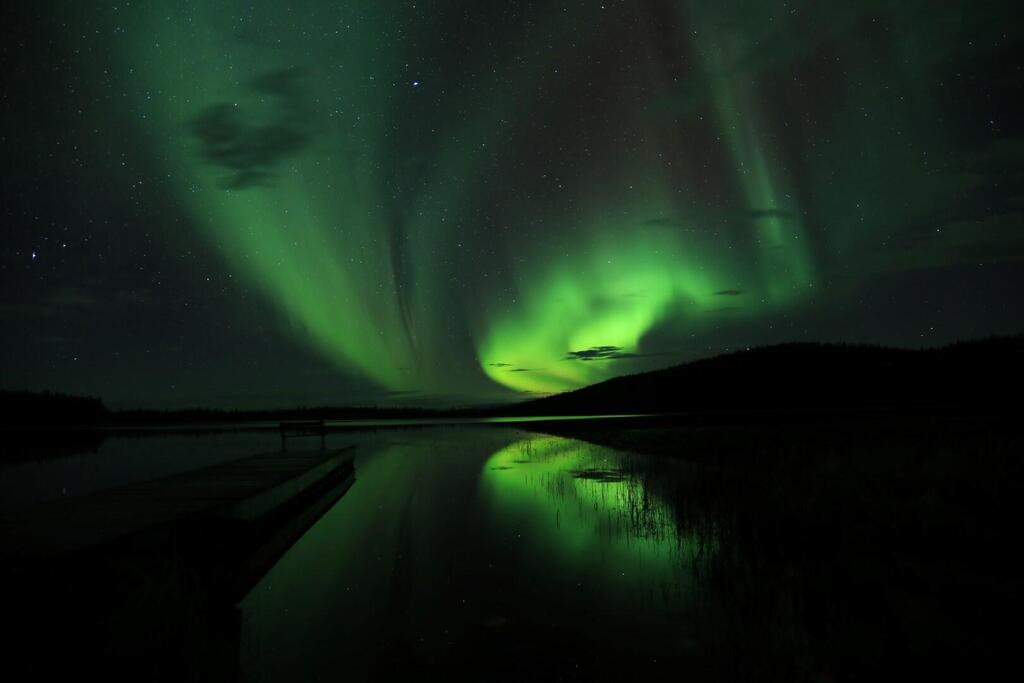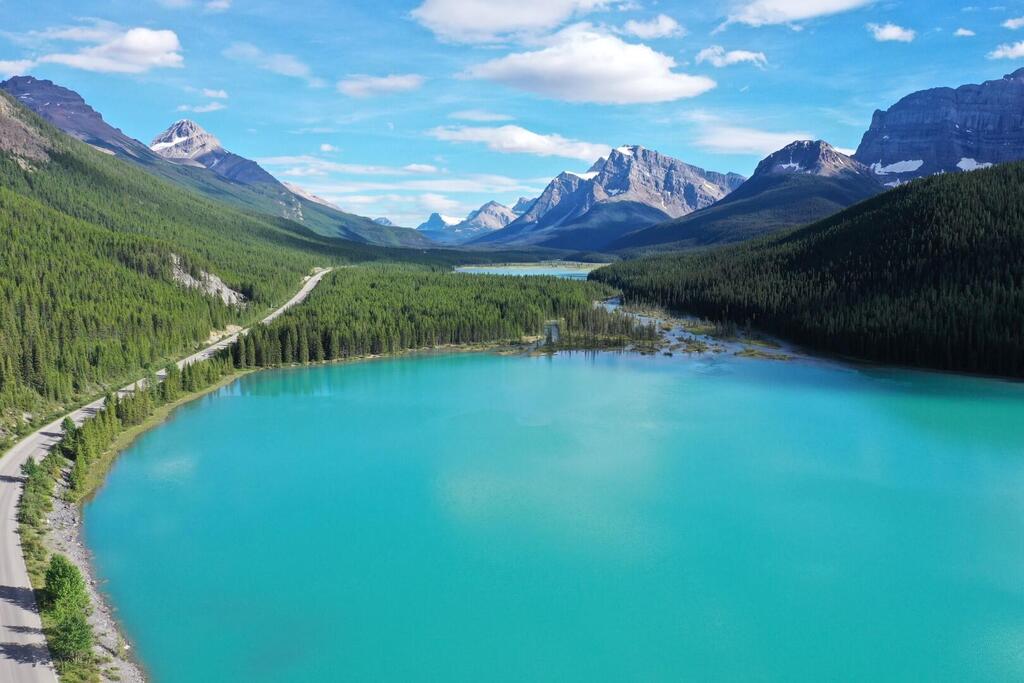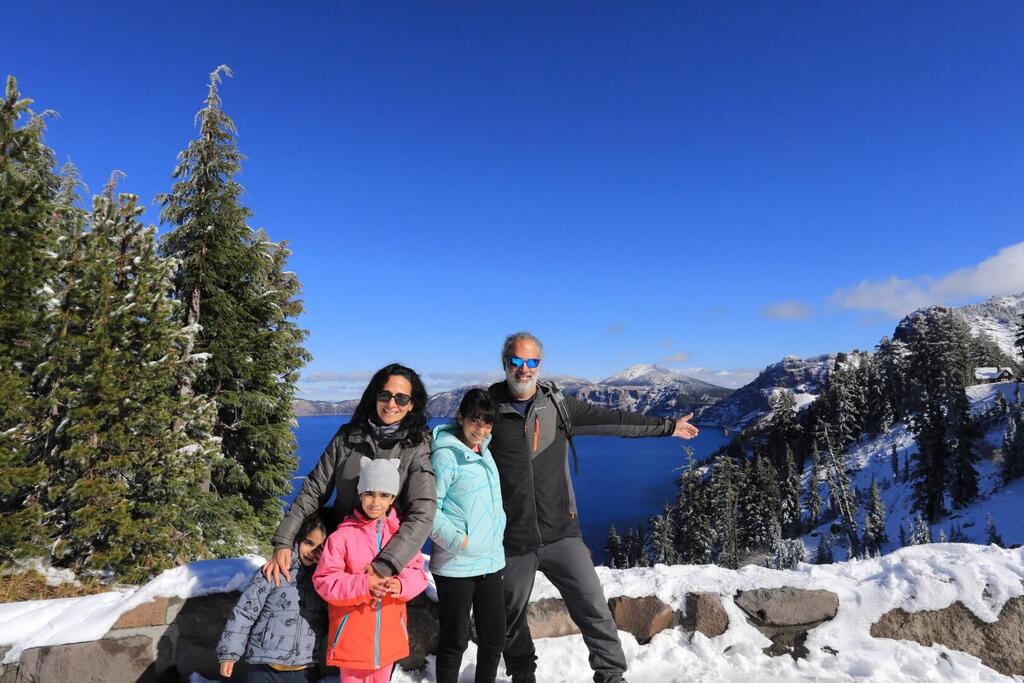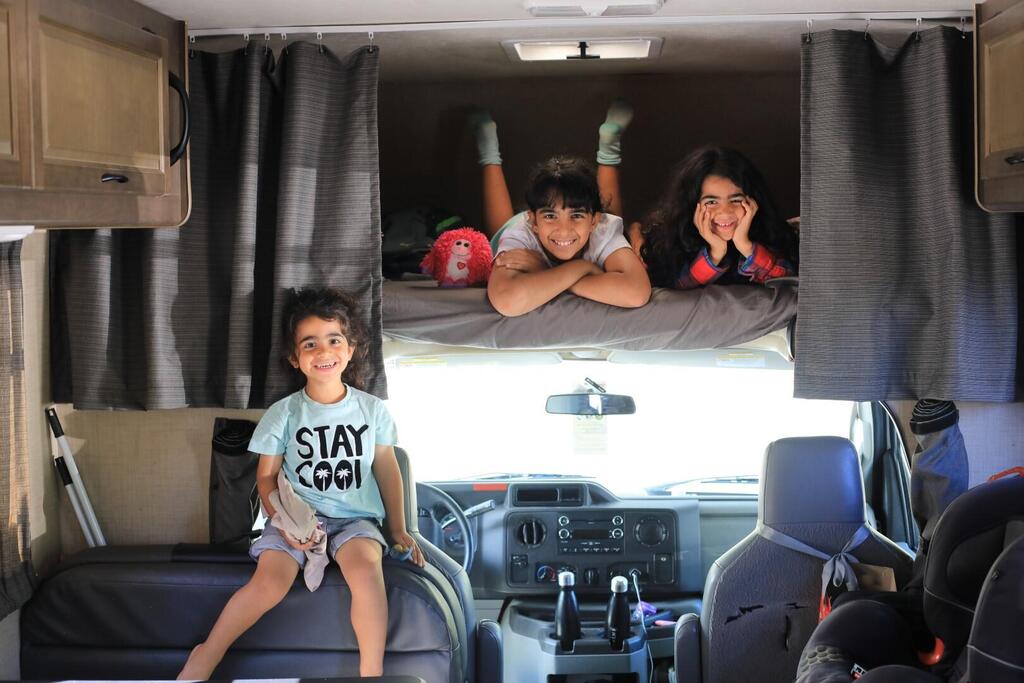I always dreamt of taking a long trip with the whole family, seeing beautiful landscapes, feeling and being together. I wanted an experience of all the senses, doing and seeing everything. It took a global pandemic for my partner, Hadar, to finally say out loud: “Maybe the time has come for us to take that long trip.”
From there, the snowball couldn't be stopped. And just a few weeks after we decided to go for it we actually started it. We didn’t plan a route or anything. We just thought of where we’d like to start. We didn’t even think about how we were going to do it. Backpacking? Hotels? Public transport? A car? Or a caravan trailer?
Hi, I’m Einav, and my partner Hadar and I live in Hod Hasharon with our three children, Nofar, 11, Manor, 6, and Meitar, 3. We decided to take a trip for one year - so the children would only miss a single school year. The original plan was to just “go with the flow,” with no long-term plan, going wherever the wind may take us.
We decided that we should start out somewhere familiar and take it from there. We chose Alaska. I’d been there before. I thought it would be good to feel the power of nature, the wild and free open spaces. Alaska has good roads, organized street-signs, good healthcare, and a language we know.
When we looked into car-hire, we realized we’d missed the July cut-off date – so we bought a caravan. We thought we’d have more flexibility traveling by a caravan in tourist high-season. We wouldn’t have to rely on hotel or apartment-rental availability. We looked on line, but couldn’t find a caravan to buy in Alaska. All the vehicle rental people wrote telling us that we’d missed the cut-off date for rental services. So, we looked further south. Washington state was the closest.
We thought we’d “conquer the world” in style. That doesn’t mean we have to travel the whole globe - it’s just a great motto. However, when we realized we had so much time, we began feeling that the world was our oyster, that it’s ours to see. We can decide whatever we want, how we want, when we want. It’s a real sense of freedom. We set off.
How do you get started?
We started by finishing off all bureaucratic stuff here in Israel – the very antithesis of freedom. We spent the end of June packing and planning. It was exciting and we were feeling the pressure. We said our goodbyes to friends and family. More organizing, more bureaucracy, visas, passports, foreign currency, health insurance, budgeting. What do we need to take? How should we pack? Despite all this pressure, at the end of each day, we’d say to ourselves “It doesn’t matter. In a month’s time, we’ll be on a plane. We’re going to see the world!”
We spent the beginning of the children’s summer break in July selling furniture and giving away clothes and toys. We packed up the rest of the house into boxes for storage. On our taxi ride to Ben Gurion Airport with all our bags and cases, we knew we were leaving Israel’s traffic jams behind us. The airport was packed. We’d taken advice and shown up four hours before our flight. Standing in one endless line after another, it took us three hours to get as far as passport control. We flew from Ben Gurion to Dubai, then another two flights to get to Seattle. In total, we were 17 hours in the air and five hours at the Dubai layover.
Exhausted, we took a taxi from Seattle airport to a motel in Everett, Washington. The very next day, we bought and picked up the caravan. They gave us a comprehensive explanation about the caravan - batteries, propane tank, electric connections, water pumps, shower, toilets, stove, seats, safety belts, beds, greywater drainage and, black water - as they call human waste here. We also made sure the engine was okay. We checked oil and water, tire pressure, refamiliarized ourselves with driving rules and were even tested on taking wide turns, both left and right. It’s a motorhome – a “home” attached to a Ford. It’s nine meters (30 ft) long. For one used to driving a Hyundai i10 back in Israel, that’s very long.
We spent the first days battling jetlag and buying things we needed. The children would fall asleep in the early evening hours without showering. They’d then, of course, wake up again at two or three in the morning. We stocked up the refrigerator and bought things for the caravan (kitchen utensils, sheets and blankets and bought a local SIM card). We spent those first nights in lovely caravan-parks overlooking duckponds and beautiful lawns, providing full hook-up to water, electricity and drainage. We learnt that the caravan maintenance only takes a few minutes each day. The upstate Washington weather is great. The caravan park manager said to us “It’s our regular summer weather. It’s a Washington state secret. If the secret got out, everyone would be coming here.“
Life’s a daring adventure. I think the word “daring” best describes our decision to take this trip. A thousand-mile journey starts with a single step. We’ve started walking.”
North America is a huge continent covering Canada and the United States. They’re both enormous. You could tour the area for a lifetime and still not see everything. Taking an unplanned tour with a caravan here is like taking a child to a fairground forever - a fairground with no lines and no limits. The sky’s the limit. But we’ve set other boundaries.
As a family, we’ve tried to create some ground rules including structured family meals, restricting daily driving hours and reaching our destination before dark. When we’re on the road, we try keeping the children engaged – and not on their phones. It doesn’t always work. We’re still learning, trying to involve the children as much as possible. We look out for wildlife, playgrounds and hiking trails. We even try guessing which animals we’ll spot each day.
As we started our trip in Washington, we were in no hurry to get to Alaska, planning to get there only in the fall. We wanted to see lots more stuff before that. We visited the Olympic Peninsula, the San Juan Islands and across the border in Canada, the Vancouver Islands. We continued east, across the Cascade Mountains, Mount Rainier, and Mount St. Helens.
Then onto the Yellowstone National Park in Idaho. We went south to the Grand Teton National Park in Wyoming, then northwards to the Glacier National Park in Montana. From there, it wasn’t far to the Canadian Rockies. After the snowy mountains and turquoise lakes of the Rockies, we started heading north through British Columbia towards Alaska.
We entered Alaska, visited the isolated border settlements, then crossed back into Canada three times before heading for Central Alaska.
What are your destinations?
Throughout our journey – and we’ve been on the road for a year and a half now - we’ve targeted general destinations rather than geographical sites. We want to see certain animals and natural phenomena and learn the history of the places we visit. We’re less interested in getting to specific places. Wildlife and topography don’t care that there’s a border between Canada and the United States.
It gives us great freedom of movement. We don’t always know where we’ll sleep each night. We generally only decide that evening. If the weather’s no good, we’ll head in the direction of better weather, or just stay put for a while. Setting out, we knew that touring Alaska in the fall isn’t the same as touring Alaska in the summer. Although the weather may cause problems, there are other advantages such as clear roads, less mosquitoes and better availability for visiting sites.
It was important for us to get to see the Aurora Borealis (Northern Lights) during powerful geomagnetic activity. You need to be there at the right time. The right place is the Van Allen Belt, a belt just south of the North Pole that covers all of Yukon. We wanted a spot with open skies that would be good for photography – and no bears roaming around.
We needed somewhere with no city lights. There are plenty of places like that in Yukon. On nights forecasting high geomagnetic activity (over six on a scale of one to nine), we’d do our best to find clear skies as the Aurora Borealis occur far above the cloud level. They’re not visible on cloudy nights. So, we followed the weather radar and even looked at cloud cover charts. It all paid off.
For ten freezing cold December nights, we watched the Northern Lights in all their glory with our children. They were very excited and stayed awake. In the north, it looks like a giant rainbow and the when the geometric activity is strong, it’s like a huge crown above our heads. We’d see the look of wonder on the children’s faces.
Every day, we learn new things about wildlife and a multitude of natural and geological phenomena: In Yellowstone National Park, we saw herds of bison and geothermal activity. We waited patiently to see geysers erupting high up into the air in the middle of a dormant volcano. In Alaska, we saw massive glaciers that were frozen rivers. We learnt about the melting of the ice-caps and the various colors in the ice (white, blue, black lines) and how they affected the formation of the valleys and the turquoise color of the lakes. We learnt what causes the tides. We saw amazing sunrises and sunsets. We felt the days get shorter and summer turn to fall. We saw the colors of the leaves change. We saw the Northern Lights and a full lunar eclipse.
We learnt all about how salmon swim upstream from the sea, through rivers and waterfalls and how an inexplicable force brings them back to the place they were born. We visited salmon hatcheries that release hundreds of millions of fish into the water each year. We learnt about all kinds of animals: black bears and brown grizzlies and the differences between them (here’s a clue- the color’s confusing). We learnt about different kinds of reindeer and how to tell them apart by their horns, how otters retain their body heat in Alaska’s icy cold water. We saw families of killer whales. We learnt how tell the males from the females and the calves by their fins. We saw fin-whales hunt herring. We learnt about the Gold Rush in Alaska and Yukon – an inspirational moment in time when people left their familiar surrounds to set out into the unknown, and invariably the impossible.
We spent whole days with no internet, e-mail, Facebook YouTube or WhatsApp. In the national parks, there’s generally no cellular reception. It was as if we’d been unplugged. Obviously, that can be a good thing. It makes planning the trip difficult though and it’s hard on the children. Long journeys are boring for the children. We found car games that both alleviate boredom and decrease the number of arguments in the back-seat.
The little ones’ first words in English were “visitors’ center”. In North America, they put a lot of work into these museums where children can observe, learn and touch. The rangers want the children to learn about the animals and the importance of nature conservation. They have child-friendly activities, including coloring books and questions in English about the park’s flora and fauna. When they finish the workbook, the children get a little prize or a young ranger’s license. It’s amazing. It’s also good for their English.
We always try identifying wildlife along the road. In the national parks and along the roads, we’ve seen: black and brown bears, foxes, mountain lions, moose, Canadian deer, caribous, squirrels and we’ve spotted river damns built by beavers. At the start of each day try to guess what animals we’ll see today. We sum up every day. If we’ve spotted a bear, it’s a “beary good day.” If we saw bison, then we had a “bice day.” If the bison were in the water, then we had a “wetty bice day”
It's fall now and colors are abundant: green, yellow, red and white. The lakes are turquoise and the sky is blue. Someone once told me that the world is like an open book. If you don’t go to see it, you’re stuck on the same page. So, we decided to read a few more chapters. It takes 40,000 km (25,000 miles) to circumnavigate the globe. So, we started out in a caravan like a tortoise with its home on its back.
85 years ago, Natan Alterman wrote: “And once again the road opens wide, and a cloud in its sky, and a tree in its rains still awaits you, by-passer.” The road has called us. We’ll be back soon.
Schooling: When we set out, we informed all the children’s teachers: headteachers, kindergarten teachers, headteachers at the gifted children’s project. They were all very supportive. We try allocating time for learning Hebrew language, Math, English, Geography, History and lots and lots of nature.
Caravan parking: We travel mainly in keeping with the weather. We usually sleep “wild camping” – not in official caravan grounds with water and electricity. The caravan keeps the refrigerator, stove, gas etc. going through the night – allowing us maximum flexibility.
Costs: As we bought the caravan, our main costs in North America are food and gas, and the caravan practically drinks gas.


